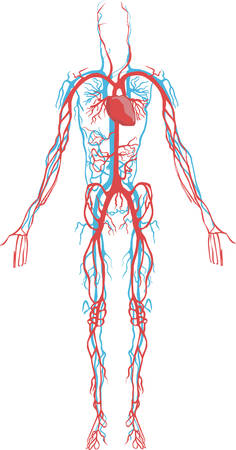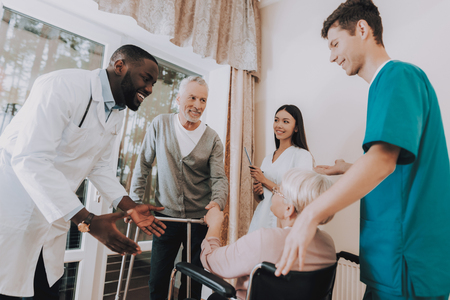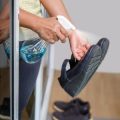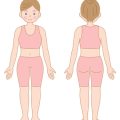1. Understanding Cardiac and Pulmonary Rehabilitation in the U.S.
Overview of Cardiac and Pulmonary Rehabilitation
Cardiac and pulmonary rehabilitation programs are specialized medical interventions designed to help people recover from heart and lung conditions. These programs are well-established across the United States, providing a safe and supportive environment for patients to regain strength, improve their health, and learn lifelong skills for managing their conditions. The main goal is to enhance quality of life, reduce hospital readmissions, and support long-term health through exercise therapy, education, and counseling.
Prevalence and Impact in America
Millions of Americans are affected by cardiac and pulmonary diseases each year. According to the Centers for Disease Control and Prevention (CDC), heart disease remains the leading cause of death in the U.S., while chronic respiratory diseases like COPD also impact millions. These conditions often require ongoing care even after hospitalization. Cardiac and pulmonary rehab programs play a crucial role in helping patients transition from hospital to home, reducing complications and improving survival rates.
Key Statistics
| Condition | Estimated Annual Cases (U.S.) | Rehab Program Utilization Rate |
|---|---|---|
| Heart Disease | ~18 million adults diagnosed | Only about 20-30% referred to rehab after major events |
| COPD (Chronic Obstructive Pulmonary Disease) | ~16 million adults diagnosed | Less than 5% participate in pulmonary rehab |
| Stroke Survivors | Nearly 800,000 new cases/year | About 30% referred to rehab services |
Main Goals of Rehab Programs
- Improve Physical Fitness: Structured exercise plans help rebuild muscle strength, endurance, and cardiovascular function.
- Reduce Risk Factors: Education on healthy eating, quitting smoking, medication management, and stress reduction.
- Support Emotional Wellbeing: Counseling and peer support help patients cope with anxiety or depression related to their condition.
- Promote Long-Term Health: Teaching self-management skills for sustainable lifestyle changes.
Population-Specific Considerations in the U.S.
The approach to cardiac and pulmonary rehab in America takes into account diverse patient populations. Programs are tailored for older adults—who make up the largest group—while also addressing unique needs of women, minority populations, veterans, and those living in rural communities. Accessibility can be a challenge due to transportation issues or limited local facilities. Many American programs now offer telehealth or hybrid options to reach more people. Insurance coverage varies but has expanded under Medicare and most private plans for qualifying diagnoses.
2. Core Principles of Exercise Prescription
Designing a safe and effective exercise program for patients with cardiac and pulmonary conditions is at the heart of rehabilitation. In the United States, these programs are shaped by guidelines from organizations such as the American Heart Association (AHA) and the American College of Sports Medicine (ACSM). Let’s break down the essential elements you need to know when prescribing exercise in this setting.
Understanding Patient Assessment
Before starting any exercise therapy, a thorough assessment is crucial. This includes reviewing medical history, current medications, physical limitations, and recent test results like EKGs or pulmonary function tests. Understanding these factors helps clinicians create individualized plans that maximize benefits and minimize risks.
Key Components of Patient Assessment
| Assessment Area | Description |
|---|---|
| Medical History | Identify past illnesses, surgeries, risk factors, and family history. |
| Physical Exam | Check vital signs, musculoskeletal health, and respiratory function. |
| Functional Capacity | Evaluate through walking tests or treadmill protocols. |
| Lifestyle Factors | Assess daily activity level, diet, and smoking status. |
The FITT Principle: The Foundation of Exercise Prescription
The FITT principle stands for Frequency, Intensity, Time, and Type. It guides how we structure exercise programs:
- Frequency: How often should sessions occur per week?
- Intensity: How hard should the patient work during exercise?
- Time: How long should each session last?
- Type: What kind of exercises are most appropriate?
Applying FITT in Cardiac and Pulmonary Rehab (Based on American Guidelines)
| Component | Cardiac Rehab Recommendation | Pulmonary Rehab Recommendation |
|---|---|---|
| Frequency | 3-5 days/week | 2-5 days/week |
| Intensity | 40-80% of VO2 reserve or HRR* | Borg RPE 4-6/10** or as tolerated |
| Time | 20-60 minutes/session (can be split) | 20-30 minutes/session (start lower if needed) |
| Type | Aerobic (walking, cycling), resistance training added as tolerated | Aerobic (walking, cycling), strength training for upper/lower body |
| *HRR: Heart Rate Reserve; **RPE: Rating of Perceived Exertion Scale 0-10. | ||
Evidenced-Based Safety Considerations
The safety of every patient is a top priority. Programs should always begin at a low intensity and progress slowly. Continuous monitoring with heart rate monitors or pulse oximeters is common in American rehab centers. Staff are trained to recognize warning signs such as chest pain, excessive shortness of breath, or abnormal heart rhythms. If these occur, exercise is stopped immediately and proper medical attention is provided.
Sample Red Flags During Exercise Therapy
- Dizziness or fainting spells
- Pain or pressure in chest, neck, jaw, arms, or back
- Irrregular heartbeat or palpitations
- Sustained drop in blood pressure
- Persistent oxygen saturation below prescribed levels
The Role of Individualization & Progression
No two patients are the same. Programs must be tailored based on age, diagnosis, severity of disease, comorbidities, and patient goals. Progression is gradual—patients may start with just a few minutes per session and work up to longer periods over weeks or months. Regular re-assessment ensures the plan stays safe and effective throughout recovery.
Main Takeaways for American Practice:
- Follow AHA/ACSM evidence-based guidelines
- Create individualized programs based on thorough assessments
- Pace progression carefully to avoid setbacks
- Sustain close monitoring for safety at all times
This approach ensures that patients in cardiac and pulmonary rehabilitation receive care that is not only effective but also aligned with the highest standards in American clinical practice.

3. Multidisciplinary Team Approach and Patient-Centered Care
The Role of the Rehabilitation Team
In cardiac and pulmonary rehabilitation across the United States, a multidisciplinary team is essential to deliver effective care. This team usually includes physicians, nurses, physical therapists, occupational therapists, respiratory therapists, dietitians, psychologists, and sometimes social workers. Each member brings their expertise to address the wide range of needs that patients may have during their recovery journey.
| Team Member | Main Responsibilities |
|---|---|
| Physician (MD/DO) | Medical oversight, assessment, clearance for exercise |
| Nurse (RN) | Patient education, monitoring vital signs, medication management |
| Physical Therapist (PT) | Designing individualized exercise programs, mobility training |
| Occupational Therapist (OT) | Assisting with activities of daily living, energy conservation techniques |
| Respiratory Therapist (RT) | Breathing exercises, oxygen therapy management |
| Dietitian (RD) | Nutritional counseling and meal planning for heart/lung health |
| Psychologist/Social Worker | Mental health support, coping strategies, family counseling |
Collaboration Among Healthcare Professionals
Collaboration is key in American rehab settings. Regular team meetings help everyone stay on the same page about patient goals and progress. Communication tools like electronic health records make it easier for team members to share updates quickly and securely. This coordinated approach ensures that all aspects of the patient’s health are addressed—physical, emotional, and social.
How Collaboration Works in Practice:
- The nurse may notice a change in a patient’s blood pressure during exercise and alert the physician.
- The physical therapist can adjust the exercise plan based on new medical findings.
- The dietitian may work with both the nurse and physician if a patient has dietary restrictions due to medications.
- If a patient struggles emotionally, the psychologist can join sessions or offer individual support as needed.
Patient Engagement, Empowerment, and Adherence Strategies
American rehab centers put a strong focus on patient-centered care. This means tailoring treatment plans to each person’s unique lifestyle, preferences, and goals. Here are some common approaches to keep patients engaged and motivated:
- Goal Setting: Patients set short-term and long-term goals together with their team. Achieving small milestones keeps motivation high.
- Education: Teaching patients about their condition helps them understand why rehab is important. Classes or one-on-one sessions often cover topics like heart-healthy eating or managing breathlessness.
- Family Involvement: Including family members in educational sessions builds a strong support system at home.
- Cultural Sensitivity: Recognizing cultural differences ensures that communication and recommendations fit each patients background.
- User-Friendly Technology: Mobile apps and wearable devices track activity levels and send reminders for appointments or medication, helping patients stay on track even outside of the clinic.
- Positive Feedback: Celebrating progress—no matter how small—boosts confidence and encourages ongoing participation.
Quick Tips to Boost Engagement & Adherence:
| Tactic | Description |
|---|---|
| Simplify Instructions | Avoid medical jargon; use plain language for exercises & instructions. |
| Create Flexible Schedules | Offer morning or evening classes so patients can fit rehab into their day. |
| Culturally Relevant Materials | Provide handouts or videos that reflect patients’ languages & customs when possible. |
This multidisciplinary and patient-centered approach not only improves clinical outcomes but also helps people feel empowered as active partners in their own recovery journey.
4. Addressing Barriers and Disparities in Access to Care
Cardiac and pulmonary rehabilitation programs offer life-changing benefits, but many Americans face real challenges when trying to access these services. Lets take a closer look at the main barriers patients encounter in the United States and explore practical strategies for promoting health equity.
Common Barriers Faced by Patients
| Barrier | Description | How It Impacts Access |
|---|---|---|
| Insurance Coverage | Not all insurance plans cover rehab or they have high out-of-pocket costs. | Patients may delay or skip rehab due to cost concerns. |
| Socioeconomic Status | Low income, unstable jobs, or lack of reliable transportation. | Makes it hard to attend regular sessions or afford co-pays. |
| Cultural Factors | Language barriers, mistrust of healthcare system, or different beliefs about exercise and medicine. | Patients might not understand recommendations or feel comfortable joining group programs. |
| Geographic Location | Living in rural areas with limited access to specialized rehab centers. | Long travel distances discourage participation and follow-up care. |
Strategies to Promote Health Equity in Rehab Services
Improving Insurance and Financial Support
- Work with case managers to help patients understand their coverage and available financial assistance programs like Medicaid or hospital charity care.
- Advocate for expanded insurance coverage of cardiac and pulmonary rehab at both state and federal levels.
Tackling Socioeconomic Challenges
- Offer flexible scheduling, including early morning, evening, or weekend classes for those with demanding work hours.
- Partner with local transportation services or ride-share programs to help patients get to appointments.
Cultural Sensitivity and Language Access
- Hire bilingual staff or provide interpreter services for non-English speaking patients.
- Create culturally tailored education materials that reflect the community’s values and beliefs about health and exercise.
- Foster a welcoming environment by celebrating cultural diversity within the rehab team and patient groups.
Reaching Rural Communities with Telehealth Solutions
- Expand telehealth options so patients can participate in supervised exercise therapy from home when travel is difficult.
- Develop mobile outreach clinics that visit underserved areas on a regular basis.
A Quick Look: Promoting Equity in Cardiac and Pulmonary Rehabilitation
| Equity Action Step | Example in Practice |
|---|---|
| Bilingual Classes & Materials | Offering Spanish-language rehab groups in cities with large Hispanic populations. |
| No-Cost Transportation Vouchers | A hospital provides bus passes for low-income patients attending outpatient rehab. |
| Telehealth Exercise Supervision | A nurse leads virtual group exercise for patients living far from the clinic. |
The goal is clear: make sure every patient—no matter where they live, how much money they make, or what language they speak—has a fair shot at a healthier future through effective exercise therapy for heart and lung conditions. By recognizing these barriers and taking action, healthcare providers across America can help close the gap in access to life-saving rehabilitation services.
5. Current Trends and Innovations in American Rehabilitation Practice
New Technologies Transforming Cardiac and Pulmonary Rehabilitation
In recent years, technology has become a game-changer in the field of cardiac and pulmonary rehabilitation across the United States. Wearable fitness trackers, smartwatches, mobile apps, and remote monitoring devices are now widely used to track patients’ heart rates, oxygen levels, activity patterns, and progress during exercise therapy. These tools not only provide real-time feedback but also help clinicians make better-informed decisions about patient care.
| Technology | Main Function | Benefit to Patients |
|---|---|---|
| Wearable Trackers (e.g., Fitbit, Apple Watch) | Monitor heart rate, steps, and oxygen saturation | Encourages daily activity and self-monitoring |
| Mobile Apps | Guided exercise programs and symptom tracking | Makes rehab accessible at home or on the go |
| Remote Monitoring Devices | Transmit data directly to healthcare providers | Allows for early detection of health issues |
The Rise of Tele-rehabilitation in the U.S.
Tele-rehabilitation, or “tele-rehab,” is rapidly gaining ground as a convenient way for patients to participate in supervised exercise therapy from their homes. Especially since the COVID-19 pandemic, tele-rehab has become a safe alternative for those who cannot attend in-person sessions. Through video calls, online platforms, and virtual coaching, therapists can guide exercises, monitor patient progress, and answer questions in real time.
Key Benefits of Tele-rehabilitation:
- Accessibility: Reaches patients in rural or underserved areas.
- Flexibility: Patients can schedule sessions around their daily lives.
- Continuity of Care: Reduces interruptions due to transportation or health concerns.
- Personalized Support: Therapists can tailor programs based on individual needs even remotely.
Policy Developments Shaping the Future of Rehab in America
The federal government and insurance companies are recognizing the value of cardiac and pulmonary rehabilitation more than ever before. Medicare now covers more types of remote rehabilitation services for eligible patients. There are also ongoing discussions about expanding coverage to include additional telehealth options and digital health tools.
Main Policy Changes:
- Expanded Medicare Coverage: More support for home-based and virtual rehab services.
- Pilot Programs: Testing new models that blend in-person and virtual care for better outcomes.
- Focus on Health Equity: Policies aim to reduce barriers for minorities and low-income populations who have higher rates of heart and lung disease.
Looking Ahead: What This Means for Patients
The combination of innovative technology, flexible tele-rehab options, and supportive policies is making cardiac and pulmonary rehabilitation more effective and accessible than ever in the U.S. As these trends continue to evolve, patients will benefit from improved monitoring, personalized care plans, and greater opportunities to recover safely at home or within their own communities.


